
When you’re settling into a new home or thinking about potential renovation projects on your existing house, it’s easy to get caught up in the high-traffic areas. Expanding your kitchen into an open concept living area or completely overhauling your master bathroom into ensuite perfection can be top priorities in any home reno.
When it comes to upgrades and upkeep, the things you aren’t thinking about could be the very ones that could save your life in the event of an emergency. In 2016, there were roughly 352,000 home fires across America resulting in over $5.7 billion in damages and over 2,700 lives lost.
Replacing the batteries in your smoke detector or making sure you own (and can locate) a fire extinguisher isn’t glamorous, but they could make all the difference should disaster strike. Which begs the question: If a fire broke out in your home tomorrow, would you know what to do to keep your family safe? To find out, we surveyed over 1,000 people to understand how prepared they were for a home emergency. Read on as we break down the likelihood of people owning, locating, and knowing how to use a home fire extinguisher, in addition to how adept they are at preventing a simple accident from becoming an avoidable tragedy.
Equipped for emergencies
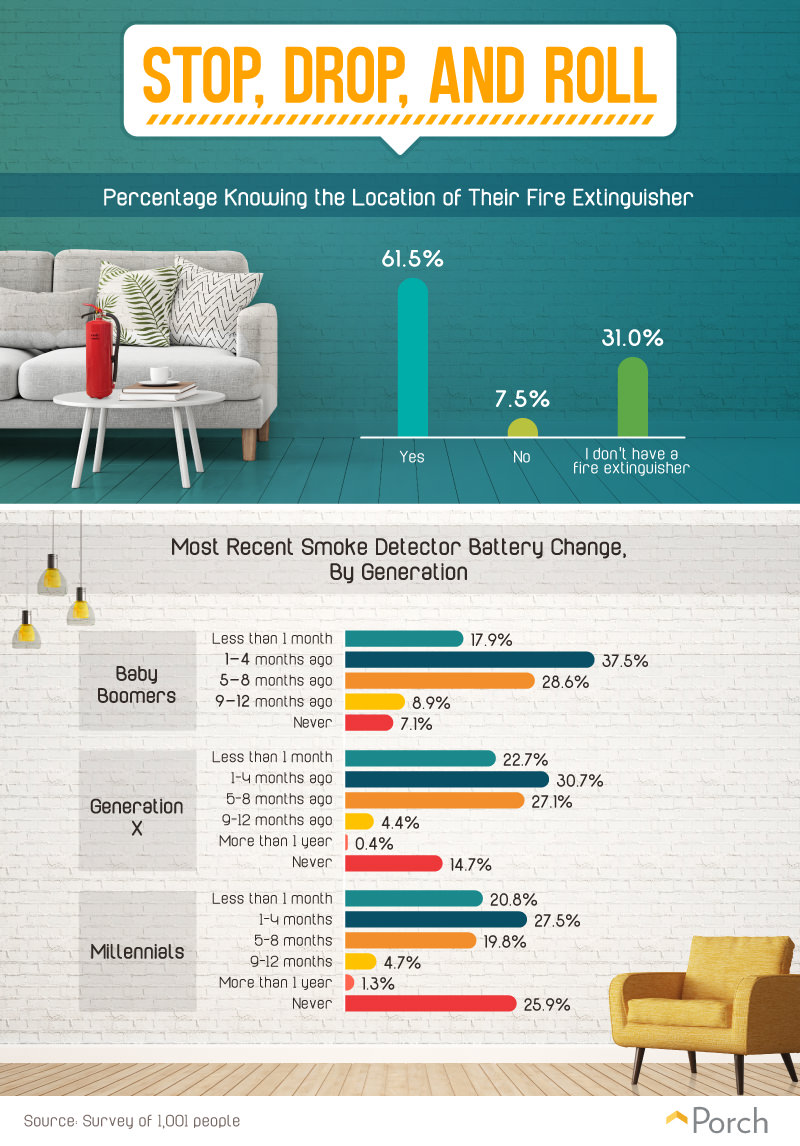
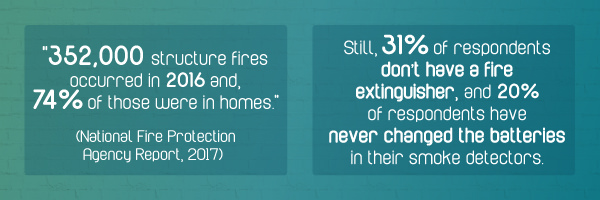
A house fire can originate from virtually any room in your home. While half start in the kitchen (largely prompted by ovens and stoves), your bedroom, living room, attic, and laundry room are all places a fire could start and spread rapidly. And because accidents can happen at any moment, just attempting to prevent a fire may not be enough to keep your family from harm’s way.
Having a smoke detector installed inside your home is a mandatory safety precaution; maintaining its functionality is entirely up to you. A detector’s batteries are supposed to be changed every year to aid in proper functioning, and the entire device should be replaced once every 10 years. And while a vast majority of people were diligent enough to have replaced their batteries at least once within the last year, we found younger generations may have missed the memo. Compared to 7 percent of baby boomers and roughly 15 percent of Gen Xers, more than 1 in 4 millennials admitted to never having swapped out the batteries in their smoke alarms.
Like smoke detectors, making sure there’s at least one fire extinguisher in your home is a simple way to be prepared for a worst-case scenario. That is, of course, as long as you actually know where it is when you need it. Our survey found nearly 62 percent of people across the country had a fire extinguisher at home and knew exactly where it was. In contrast, 31 percent of people didn’t own a fire extinguisher at all, and nearly 8 percent said they had one but couldn’t locate it.
Knowing what to do next

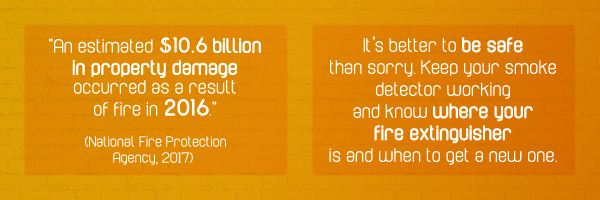
Just because a fire can happen at virtually any time doesn’t mean you’ll be entirely prepared if the moment should arise. Ensuring your home is equipped with functioning smoke detectors and fire extinguishers is a start—but what if you (or the other members of your family) aren’t entirely confident with how they work?
Even if you think you could figure it all out in a moment of need, the reality is you can’t exactly predict what your brain will or won’t process when an emergency hits. Whether it’s around the office or with your family, understanding how to operate a fire extinguisher could make all the difference if you’re experiencing fear or panic.
And while we found a majority of people had at least one fire extinguisher in their homes, they were generally much less confident in their ability to use it properly. At most, less than 59 percent of baby boomers were positive they could manage a fire extinguisher effectively, and fewer than half of Gen Xers and 42 percent of millennials said the same. In fact, between 25 and 32 percent of people from every age group confessed they weren’t at all confident operating their fire extinguisher.
Within arm’s reach
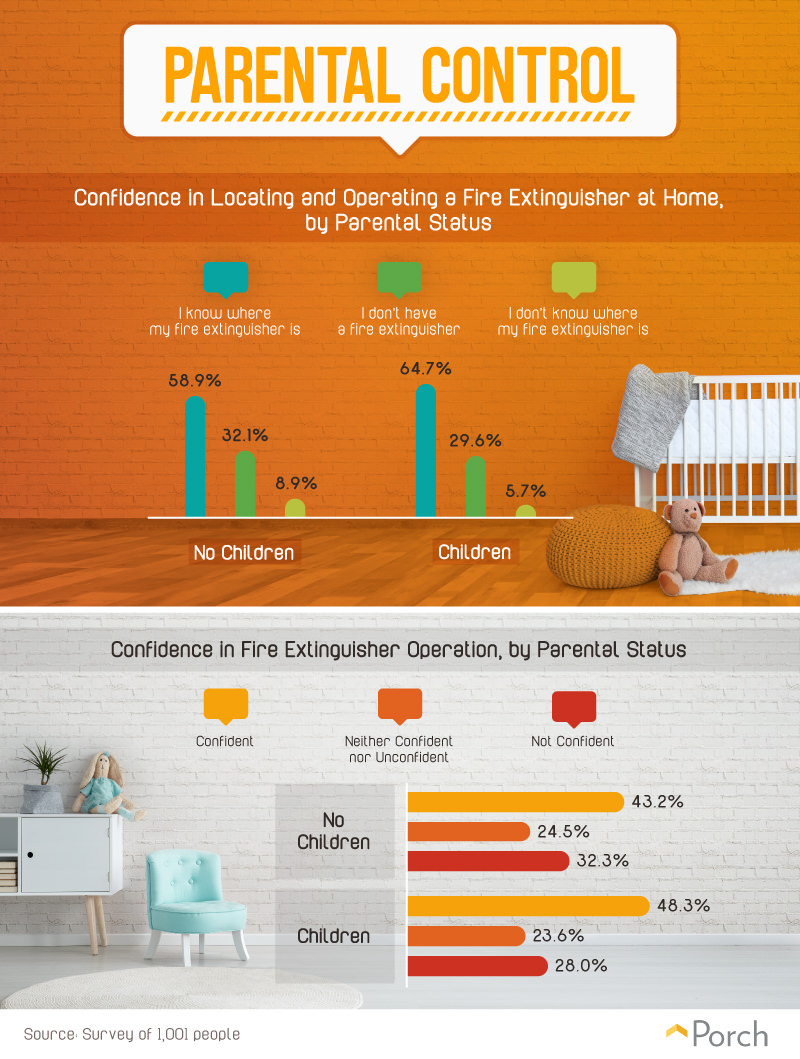

Thousands of people die every year from fires started inside their homes, and that includes children and teens who may not know how to respond when they see smoke or flames for the first time. In 2016 309 children under the age of 14 died as a result of these tragic accidents.
Still, having children at home may help parents think more critically about keeping up with basic fire safety around the house. Parents we surveyed were both more likely to have a fire extinguisher at home and know where it was located than non-parents. Compared to fewer than 59 percent of adults without kids, nearly 65 percent of people with children in their homes said they were equipped with a fire extinguisher and could find it when they needed it. Perhaps even more importantly, people with kids were also more likely to feel confident in their ability to work their fire extinguishers (48 percent) than those who didn’t have children (43 percent)—though we still found 28 percent of parents were less than convinced they’d know what to do if a situation called for it.
A nontrivial necessity
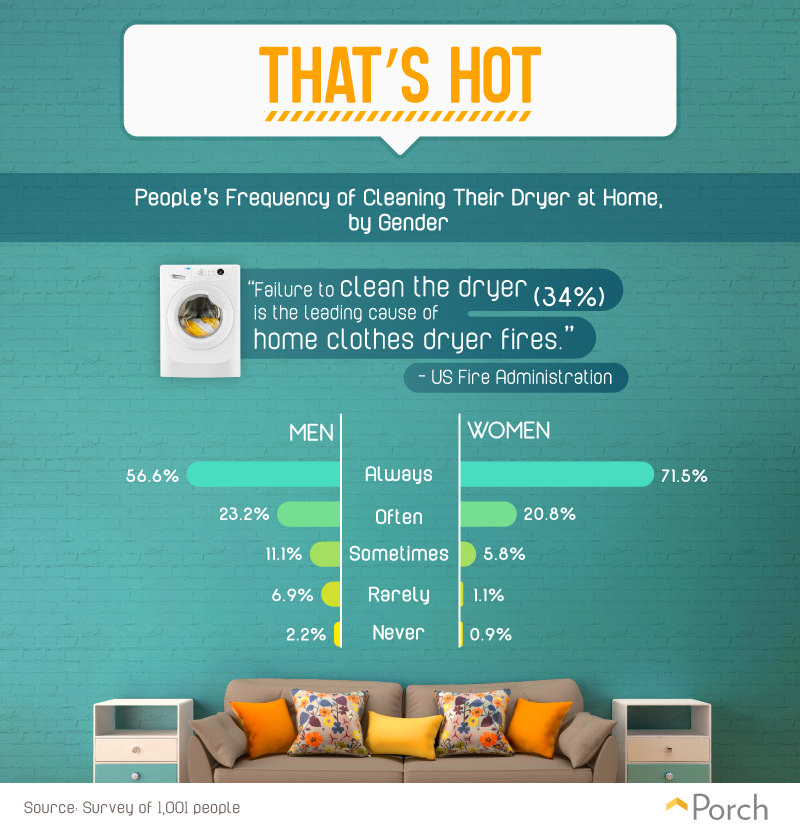
If your parents ever scolded you for not cleaning the filter on the dryer, her concern wasn’t due to an urban legend: It was a very serious fire safety prevention tip. Every year, more than 14,000 home fires start in the laundry room, and more often those blazes erupt as a result of too much lint in the machine rather than an electrical fire or mechanical malfunction.
If your dryer doesn’t have a fancy indicator to help remind you when it’s time to scoop out the lint filter, it’s important to make sure you’re checking it between every cycle. Still, just because you’re supposed to be keeping an eye on how much buildup is collecting inside your dryer doesn’t mean every person is as diligent as they should be. Compared to 72 percent of women and 57 percent of men who always cleaned out their in-home dryers, we found roughly 6 percent of women and 11 percent of men only sometimes did it, and another 6 percent of men and 1 percent of women admitted to rarely cleaning out the filter.
Important conversations
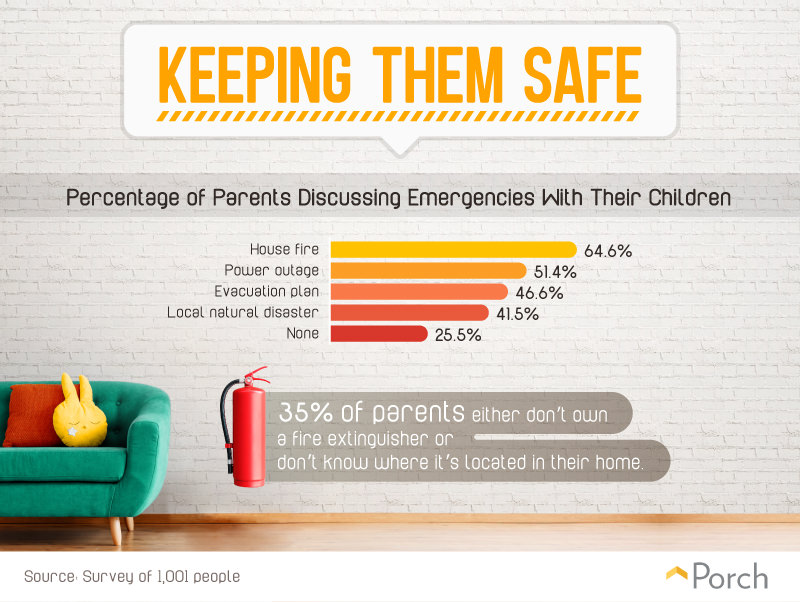
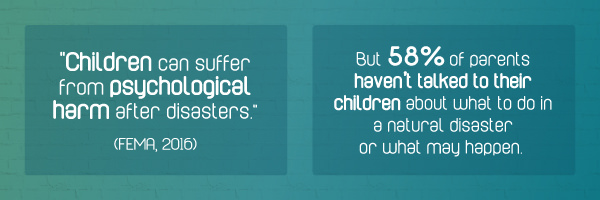
Whether it’s a fire somewhere in your house, a natural disaster, or something even more terrifying, educating your children on what to expect and how to respond can be an important part of keeping them safe in the event of an emergency. Without over-explaining, you might want to ensure they know how to remain calm, how to escape danger, and how to read the signs that something might be dangerous.
Of the more than 1,000 people we surveyed with kids, less than 65 percent made a point to have a conversation with their children about what to do if a house fire ever broke out. Only 51 percent had discussed the appropriate response to a power outage, and fewer than 47 percent of parents talked children through an evacuation plan if an area became unsafe. More than 1 in 4 parents hadn’t discussed any of the scenarios we mentioned with their children in any capacity.
Making sure you’re prepared
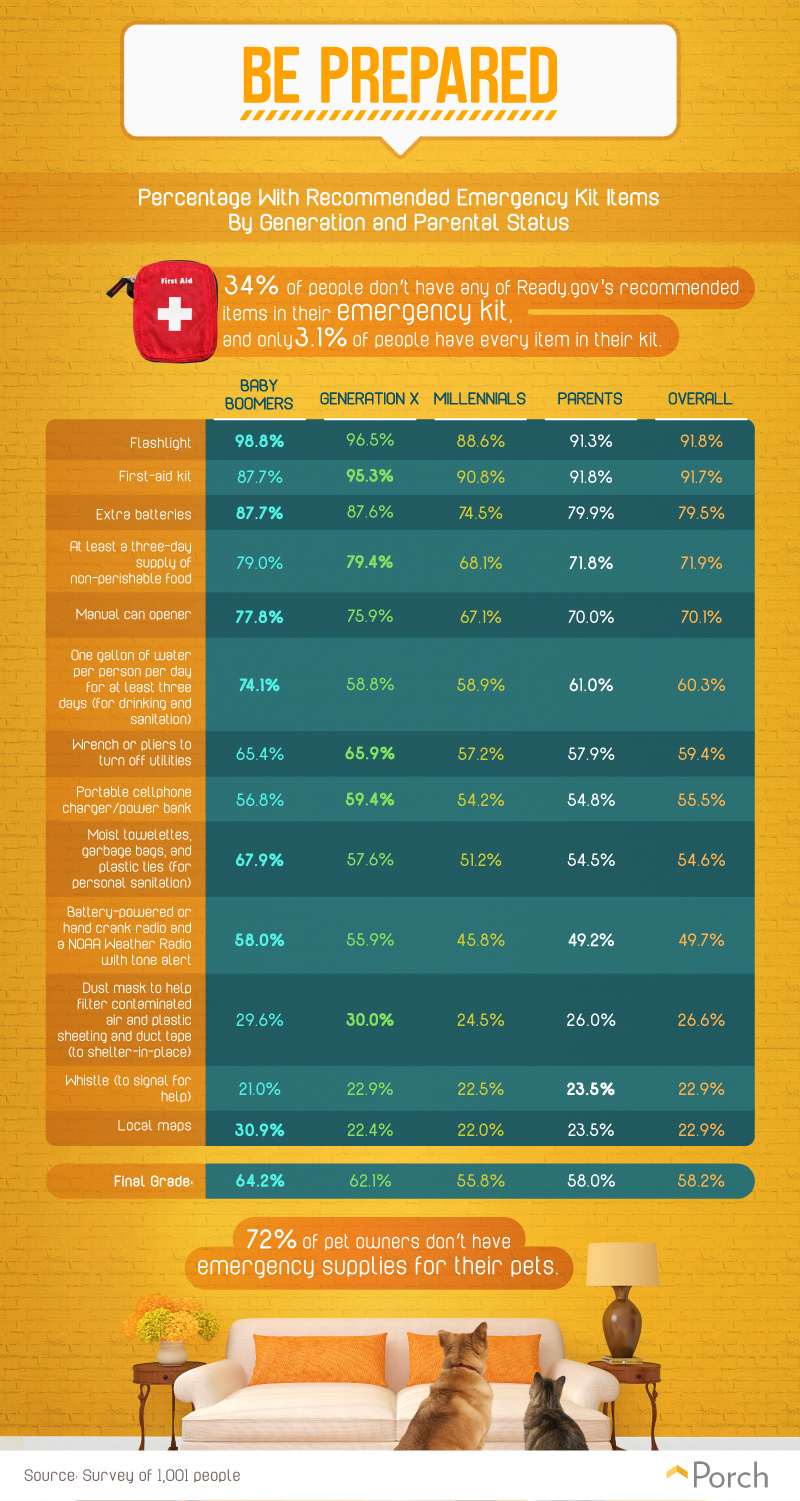
One of the easiest ways to help ensure you and your family are prepared for almost any unforeseen dangerous situation is to keep an emergency kit prepared and ready to go. Just because you have a flashlight floating around in the garage somewhere doesn’t mean you’ll be able to find it (let alone whether it will have functional batteries) when you finally need it. According to Ready.gov, it’s important to recognize both the basic necessities (like water, a first-aid kit, and backup batteries) and the unique needs of your family to build the most effective kit.
According to our survey, only 3 percent of people have every item recommended by Ready.gov in their emergency kits, and 34 percent said they have none of them. Most common across all generations was a flashlight and first-aid kit, though often it was older generations and parents who were the most prepared compared to younger people. Millennials, who were the least likely to be equipped with portable power banks for electronic equipment, nonperishable food, or local maps, earned the lowest grade overall on the readiness of their kits.
Safety maintenance you can’t ignore
Every year, thousands of people die as a result of preventable home accidents. In reality, more than thinking about the ways to keep home fires from happening, it’s important to consider how you (and your family) would respond if one did start. People we polled were more likely to ensure their smoke detectors were working than to make sure they had functional fire extinguishers available should the need arise.
The good news is it’s never too late to make safety improvements to your home. Whether it’s installing a new in-home dryer that alerts you when the filter is full or replacing detectors throughout the house with updated hardware, Porch is your go-to resource for all your home improvement needs. Our Home Assistant application is available 24/7 to help connect you with certified professionals in your area to get the job done right from the beginning. If you’re unsure whether your home is safe from a house fire today, let Porch help you feel safe again. Visit Porch online today to learn more.
Methodology and limitations
To gather the information seen above and throughout this piece, we used Amazon’s Mechanical Turk services to survey 1,001 people about their home fire and disaster preparedness. Of the respondents we surveyed, 112 were baby boomers, 251 were from Generation X, 616 were millennials, and 22 were from generations apart from those listed. We had 497 female respondents, 503 male respondents, and one respondent who identified as neither.
We do not know the ages of the respondents’ children in regards to discussing home emergencies/disasters, and a parent with an infant or toddler may not have the need to describe these emergency protocols to a child that young. All data gathered from the survey is based on self-report.
Sources
- https://www.nfpa.org/News-and-Research/Fire-statistics-and-reports/Fire-statistics/Fires-by-property-type/Residential/Home-fires
- https://www.safewise.com/blog/the-most-common-places-that-fires-occur-in-the-home/
- https://www.nfpa.org/Public-Education/By-topic/Smoke-alarms/Installing-and-maintaining-smoke-alarms
- https://blogs.cdc.gov/publichealthmatters/2016/11/this-is-your-brain-on-emergencies/
- https://www.usfa.fema.gov/data/statistics/fire_death_rates.html
- https://www.consumerreports.org/clothes-dryer/how-to-prevent-dryer-fires/
- https://www.parents.com/parenting/better-parenting/advice/ways-to-prepare-your-kids-and-yourself-for-an-emergency-situation/
Fair use statement
Want to help spread these safety findings? We’d love to see the results of our study shared on your site for any noncommercial use. Just ensure a link back to this page so your readers can see our study in its entirety.
